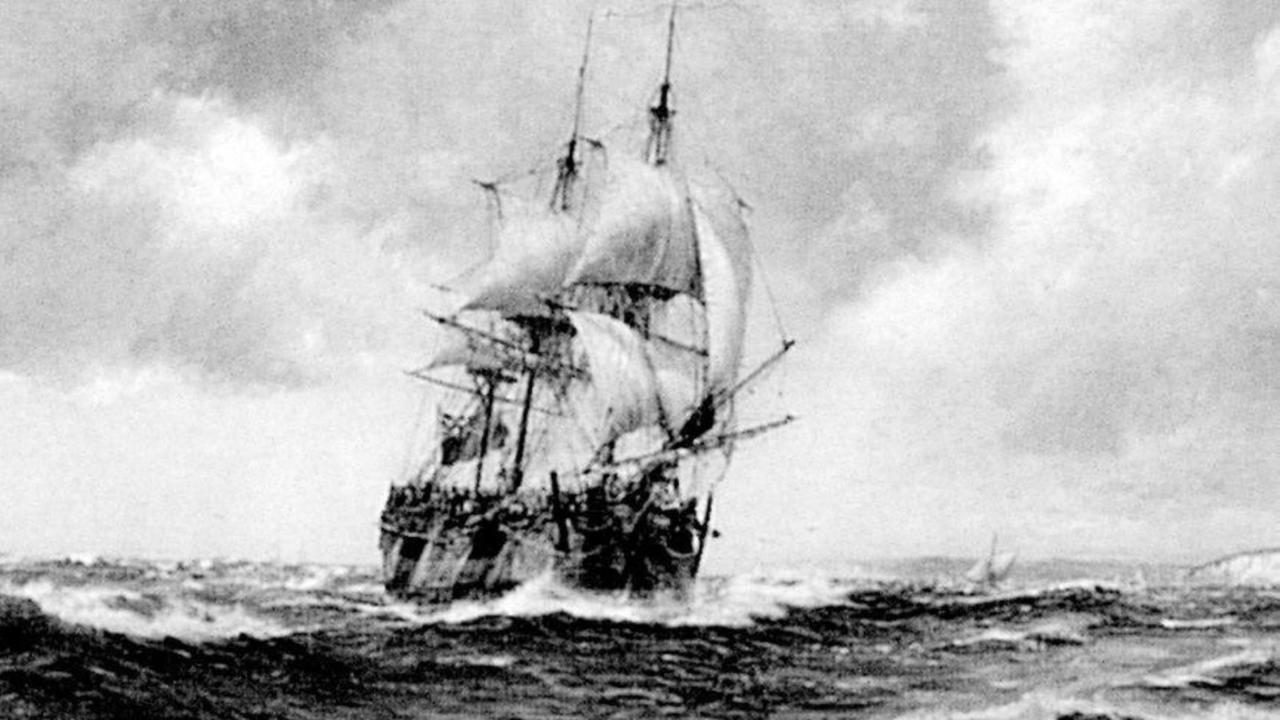

Lady Nelson replica
 In 1801, amid rumours that the French were sending a fleet of ships to New Holland to establish a colony, Governor King dispatched the acting chief surveyor of New South Wales, Charles Grimes, to King's Island, Port King (Port Phillip Bay as it was then known) and Storm Bay (the bay into which the Derwent River flows to the south of Hobart) to claim for Britain the southern section of the eastern side of the continent south of latitude 38°S, and to investigate the possibility of setting up settlements to forestall any moves by the French to lay claim to sections of the continent of Australia already annexed by Britain. Other motives were to establish a base for the fishing and sealing industry and to provide timber and flax to the Royal Navy which had been depleted by the Napoleonic Wars.
In 1801, amid rumours that the French were sending a fleet of ships to New Holland to establish a colony, Governor King dispatched the acting chief surveyor of New South Wales, Charles Grimes, to King's Island, Port King (Port Phillip Bay as it was then known) and Storm Bay (the bay into which the Derwent River flows to the south of Hobart) to claim for Britain the southern section of the eastern side of the continent south of latitude 38°S, and to investigate the possibility of setting up settlements to forestall any moves by the French to lay claim to sections of the continent of Australia already annexed by Britain. Other motives were to establish a base for the fishing and sealing industry and to provide timber and flax to the Royal Navy which had been depleted by the Napoleonic Wars.
They set sail from Sydney on 29 November 1801 in the Lady Nelson under Lieut John Murray with James Flemming (botanist) and a supporting party aboard the Cumberland (a schooner of 29 tons built in Sydney). Little did they know that as they departed Sydney, two French vessels, the Geographe and Naturaliste, under Nicolas Baudin, were already in Australian waters, exploring the coast of what was then called Van Diemen's Land (Tasmania). The British expedition surveyed several islands in Bass Strait and spent some time on a larger one which had been named King Island after the Governor of New South Wales. Murray charted the coast from Seal Bay to New Year Isles, naming Seal Elephant Bay, Elephant Rock, Cape Farewell and encountered sealers at Cowper Point.
On completion of the survey, Murray headed back to the mainland to explore Port Phillip, which was known but had not been entered or explored. After the entrance was found to the Bay on 2 February, the Lady Nelson entered it and a survey of the bay was commenced. They went ashore at Point King, 2 km west of present-day Sorrento on Port Phillip Bay to claim the land for Britain.
Murray named the harbour Port King, though this was later changed to Port Phillip Bay by Governor King. His journal records "the Port was taken possession of in the name of his Sacred Majesty George The Third of Great Britain and Ireland ...". Three days later they left the bay, returning to Sydney Cove on 24 March.
Three Hummock Islands
9.1.1802. Murray. Descriptive.
Surprise Pt, King Island
11.1.1802. Murray.
Cape Farewell, King Island
26.1.1802. Murray. Expedition left the coast here.
Boulder Pt, King Island
17.1.1802. Murray. Large rocks found there.
Fraser Bluff, King Island
17.1.1802. Murray.
Bold Head, King Island
17.1.1802. Murray. Descriptive.